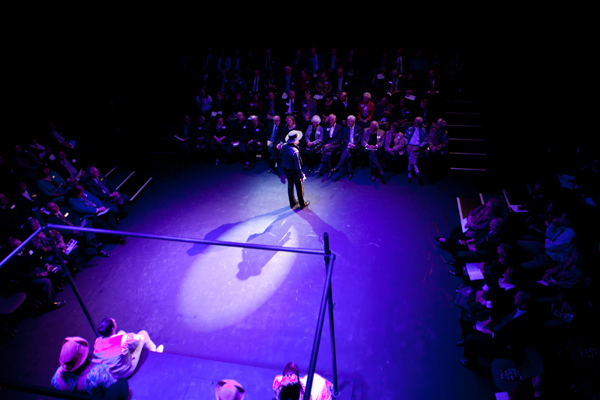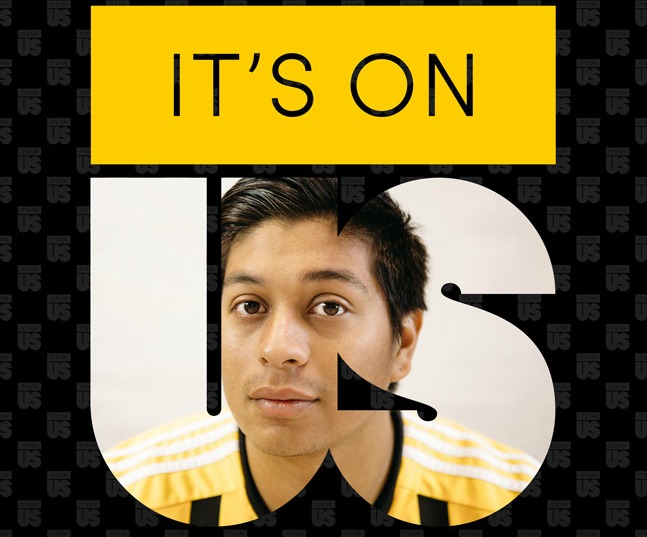Page 94 • (948 results in 0.092 seconds)
-

The PLU Theatre & Dance Department is lucky to have Amanda Sweger as a faculty member. Amanda has taught at PLU since fall 2012. She focuses on lighting and scenic design and has a professional practice outside the classroom. Continue reading to get to know…
of a transition period for a growing theatre program. What is your favorite class to teach and why? Introduction to Theatre. I love taking 40+ first year students under my wing. I not only love exploring why theatre is an essential component of democratic discourse, but I also love teaching students the essentials they are going to need to be successful students at PLU.What do you hope your students take away from your classes? That learning requires constant, imperfect practice. You need to
-

TACOMA, WASH. (Sept. 11, 2017)- Kevin O’Brien, dean of the Division of Humanities, acknowledges that programs in his department could be hit hard when Pacific Lutheran University approves final cutbacks in the coming months. Still, he’s as committed as ever to the institution’s mission. On…
colleagues.” While he disagrees with the provisional recommendation to cut seven positions in SOAC — including three in the music department and two in communication, among others — he said the mission to maintain first-class curriculum and quality co-curricular experiences for students is paramount. He stressed that many students choose to come to PLU because they can participate in music, theatre, debate or other related programs at a high level without sacrificing their pursuit of other academic
-

The PLU Theatre & Dance Department is lucky to have Amanda Sweger as a faculty member. Amanda has taught at PLU since fall 2012. She focuses on lighting and scenic design and has a professional practice outside the classroom. Continue reading to get to know…
of a transition period for a growing theatre program. What is your favorite class to teach and why? Introduction to Theatre. I love taking 40+ first year students under my wing. I not only love exploring why theatre is an essential component of democratic discourse, but I also love teaching students the essentials they are going to need to be successful students at PLU.What do you hope your students take away from your classes? That learning requires constant, imperfect practice. You need to
-

During the 2022-2023 academic year, 237 PLU students participated in global and local study away programs to acquire new perspectives on critical global issues, advance their language and intercultural skills, form valuable new contacts and lasting connections, and advance their academic and career trajectory. We…
this much fun can really get you college credit. Twyfelfontein, Namibia February 5, 20232nd Place Noah Dunham “Lunch Break” This photo encapsulates how it felt to eat lunch that day in the mountains of Norway for our second class trip. Quite oddly enough, it was also my 21st birthday – it had me thinking what I could have possibly done to receive a blizzard on my birthday?! Yet, now I feel that I almost miss this cold experience… but my toes sure don’t! Haukeli Mts, Norway February 23, 20233rd
-
Learning perspectives About a dozen students silently sit in a semicircle around a Makah woman, as she shows them how to make a cedar bracelet. Students mimic her as she holds several foot-long strands of cedar bark strung out from her mouth to her hands.…
about what it took to make the whaling vessel and what it means to hunt an animal that they revere, respect and was so important for their people’s survival for many years. “And they want to share and they will keep sharing as long as you give them an ear.” As open and honest as the Makah are, the students were well prepared to take a chance and ask questions without feeling timid. Class time before the students went to Neah Bay was dedicated to what Huelsbeck calls “Making it safe to take the risk
-

Campaign ends, surpasses goal by $22 million A performance in the Studio Theater in Eastvold Hall, which was recently renamed the Karen Hille Phillips Center for the Performing Arts. By Greg Brewis The university’s most recent fundraising campaign was launched amid buoyant economic times, in…
, their children Arne Ness ’69 and Cindy Ness, as well as grandson Shane Ness ’99. The Eastvold renovation project has been a decades-long effort. Hundreds of donors – including many through class reunion gifts – have contributed to the project. Fundraising continues for naming spaces and theater seats and for contributing to the Chapel Builders fund. Student Scholarship Support Campaign support to help ensure access for all students regardless of financial need came in two forms: annual support and
-

By Taylor Lunka ’15 PLU Marketing & Communications Student Worker TACOMA, Wash. (Dec. 17, 2014)—On Sept. 19, President Barack Obama joined Vice President Joe Biden in launching the It’s On Us campaign—to keep men and women safe by putting an end to sexual assault on…
proactive as opposed to reactive.” Jacynda Woodman-Ross, Advocacy Intern at the Women’s Center and member of the class of 2017, said this campaign is important to create a safe community. Last year, when Woodman-Ross first came to college, her mom gave her pepper spray. “I don’t really want that to be the common culture on college campuses—especially not at PLU,” she said. “I love PLU.” She also said that as a community we all could do better. “[People need to] understand that it is on us to end sexual
-

TACOMA, WASH. (April 4, 2019) — Pacific Lutheran University has a proud history of producing Fulbrights. The 2018-19 recipients are continuing that tradition by delving into indigenous studies research and education — a field that’s gaining ground at the university. Kaja Gjelde-Bennett ‘17 and English…
of North America’s indigenous populations even as she’s learning those of Latin America. “One of the biggest challenges for me designing this class … is I had to figure out which U.S. and Canadian native authors have been translated into Spanish,” Call said. “It was really interesting to see that some people that I think of as being very central to U.S.-based Native literature studies have not been translated at all.” Call will return to Colombia twice more as part of her Fulbright’s flexible
-
Originally Published 1999 “The Artist, the thinker, the hero, the saint —who are they, finally, but the finite self radicalized and intensified? . . . The difference between [them] and the rest of us . . . is a willingness to undergo the journey of…
the kind of knowing that cannot be unknown. For our students this is a process of reconstituting themselves as human beings, a process of disintegration and reintegration, for some welcome, for others not. For all, however, it is a process that usually involves their experiencing a sense of tension and even betrayal of family, peer group, social class, ethnic community, religious denomination, or political ideology. Whether and how students negotiate this process depends on many things: among them
-
Originally published in 2016 As scholars of the Humanities in the 21st century we find ourselves working in unusual settings. Places of faith and worship, educational contexts like high schools and public libraries, in newspapers, in comment forums, on radio shows, our “workplaces” often do…
search until I find the spot where my code and the tutorial differ. It takes about an hour. The error is one line. In fact, it’s one piece of one line. A colon instead of a semicolon. By now, the class has largely departed to enjoy the evening sun. My patient instructors have kept the classroom open so that a few of us with a higher pain threshold can stick around to fix our projects. They laugh when they see my error because it’s one they’ve made a thousand times. I correct the mistake and run the
Do you have any feedback for us? If so, feel free to use our Feedback Form.


